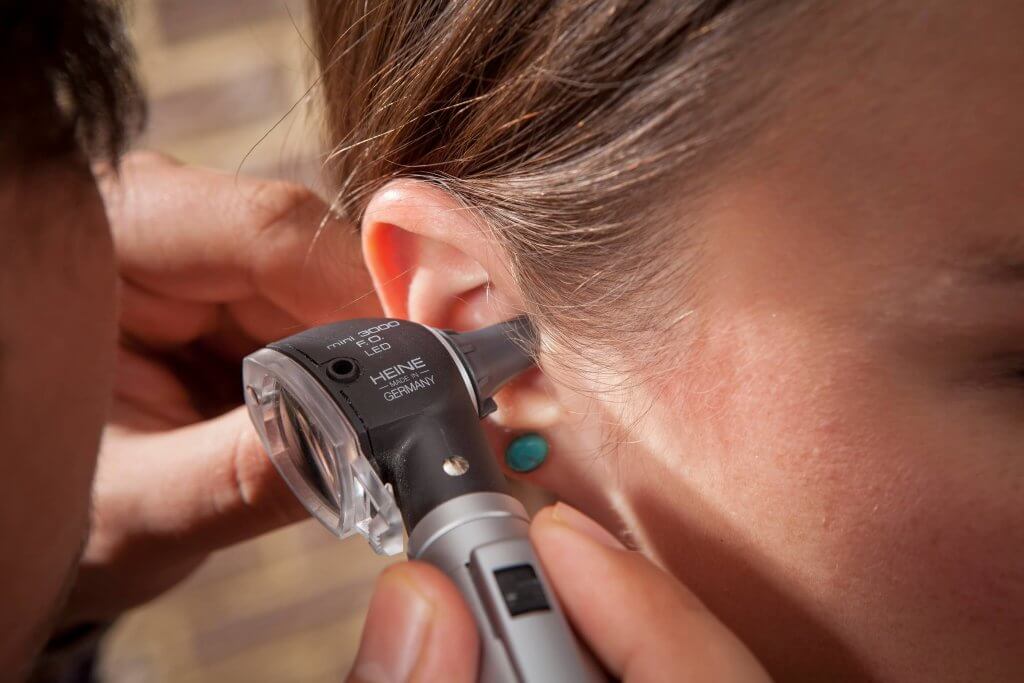If you’ve never had one before, you might want to know what happens in a hearing test. Here’s our guide to pure tone audiometry and what sets The Hearing Care Partnership aside when it comes to our comprehensive, free hearing assessments.
Firstly, what does it mean to have a ‘hearing loss’?
Our hearing sensitivity can start to worsen from our mid-twenties onwards, so some mild hearing loss can occur. Hearing thresholds are measured in ‘decibels in hearing level’, or dB HL. Normal hearing is considered anything below 20 dB (HL), while 21dB (HL) or more indicates a level of hearing loss which may benefit from a hearing amplification.
Degrees of hearing loss (above normal) are described as:
- Mild (21-40 dB HL)
- Moderate (41-70 dB HL)
- Severe (71-95 dB HL)
- Profound (Over 95 dB HL).
A pure tone audiometry test is used to measure your hearing thresholds in dB HL – at THCP, your hearing assessment does not stop there. So let’s take you through the hearing test step by step, including the pure tone audiometry test.
A hearing test is in six parts
1. You and your lifestyle
The first step is to find out what is important to you. We’ll discuss your work and home environment, your hobbies and your interests. We want to get a complete picture of how your hearing may be impacting your lifestyle.
2. Medical history
We’ll then take a look at your medical history, asking questions about relative conditions or symptoms that may have had an effect on your hearing e.g. ear infections or tinnitus. This helps our audiologists to suss out if you’ve had any medical conditions that are of any significance.
3. Otoscopy
Next, we’ll use an otoscope to look into your ears. This is just a simple instrument that helps us take a look inside your ear canals. We’re checking that they’re in healthy condition, with no obvious obstructions, inflammations or earwax build ups that may be contributing to hearing loss.
4. Tympanometry
This is followed by a test of the eardrum and condition of the middle ear. This simple, quick tympanometry procedure changes the pressure in your ear canal and records the movement of your ear drum. It can detect a range of conditions, from glue ear to eustachian tube dysfunction. This part of the test is unique to The Hearing Care Partnership – not usually offered in other high-street hearing care providers and was previously only carried out in specialist ENT clinics at hospitals.
5. Pure tone audiometry
The fifth and most important part is the pure tone audiometry test. This determines if you have a hearing loss and measures its severity. The test is simple in concept: we’re looking to find the quietest sound you can hear, testing your hearing threshold. Using headphones, we’ll play you a series of tones of different frequencies/levels and then ask you to respond whenever you hear them. Once you tell us that you can’t hear the tones, we can measure your level of hearing loss.
6. Speech tests
The final part of the assessment is speech tests, we test your speech understanding in noise, in quiet or both. This test measures how well you hear and understand speech against background noise. Using headphones and pre-recorded sounds, this replicates the conditions found in common everyday environments such as coffee shops or restaurants, where background noise often causes problems for anyone with hearing loss. We also perform a ‘speech-in-quiet’ test, to measure speech recognition with no background noise. Both of these tests are as much about testing your understanding of speech as they are a test of your hearing. You may hear words, but not necessarily hear them clearly enough to understand them (think of the subtle difference in sound between words like ‘sat’ and ‘cat’).
And that’s it. Overall, the hearing assessment takes around 60-75 minutes.
Once complete you’ll receive a full breakdown of your results, with recommendations on what to do next and whether hearing aids would be beneficial to you.
Book your free hearing test and rediscover the Sounds of Spring
Here at The Hearing Care Partnership, we’re celebrating the arrival of spring and the panoply of sounds that come with it. Our aim is simple: to draw attention to the beautiful sounds that hearing loss may have dulled. Often these quiet background noises are the first casualties of hearing loss.
If morning birdsong isn’t sounding as fulsome as it once was, you might need to have your hearing checked. A free hearing test, carried out by one of our expert audiologists, will measure your hearing sensitivity levels to see if it is above or below average. You can find your local THCP practice here or book your free hearing test online today. Alternatively, call us on 0800 52 00 546.

